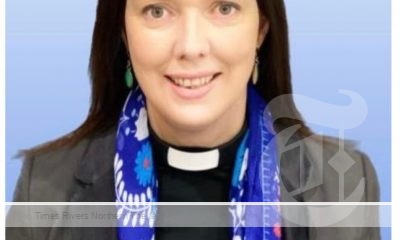Report reveals ongoing pressures on NSW healthcare system
The Bureau of Health Information (BHI) has today released its latest Healthcare Quarterly report, showing activity and performance for public health services in NSW during April to June 2022.
BHI Acting Chief Executive Hilary Rowell said patients typically waited longer for hospital and ambulance services during the quarter, as activity remained at historically high levels across most
parts of the system.
“NSW healthcare services continued to experience pressures in April to June, with sustained COVID�19 case numbers and the arrival of the winter flu season,” said Ms Rowell.
Ambulance
There were 375,215 triple zero (000) calls for an ambulance and 333,927 responses, up 21.1% and 7.8%, respectively, compared with the same quarter in 2019.
Ms Rowell said: “Demand for ambulance responses remained high, particularly for patients requiring an emergency (P1) response, and patients waited longer for an ambulance than in any quarter since BHI began reporting in 2010.”
Half of the 175,892 responses to emergency patients took more than 16.3 minutes – the longest since 2010. Additionally, the response time for half of the 12,134 highest priority (P1A) cases was more
than 9.1 minutes.
Emergency department
There were 793,987 emergency department (ED) attendances, up 5.2% compared with April to June 2019, but short of the record high in April to June 2021.
Around six in 10 patients (62.8%) were seen on time, the lowest of any quarter since BHI began reporting in 2010.
The number of patients who left without, or before completing treatment (76,117) was up 67.6% when compared with 2019 and the highest on record. This includes patients who were triaged but left the ED before treatment began, and patients who began treatment but left before it was completed.
Ms Rowell said: “Our additional analysis shows that one in five patients who leave without, or before completing treatment, tend to re-present to an ED within three days.”
Of those patients who arrived at an ED by ambulance, 72.5% had their care transferred to ED staff within 30 minutes.
Elective surgery
There were 53,712 elective surgeries performed in April to June 2022.
Ms Rowell said: “Fewer elective surgeries were performed than the historically high numbers a year earlier, but activity was up 41.1% (15,649) compared with January to March 2022, when non urgent surgery was suspended for a period of time.”
Waiting times for non-urgent surgery continued to increase – half of those patients waited longer than 339 days before receiving their surgery.
There were 98,625 patients on the waiting list at the end of June, down 2.3% (2,286) from the end of March. At the end of the quarter, 18,748 patients had waited longer for elective surgery than clinically recommended, the highest any quarter since BHI began reporting in 2010.
Detailed results are available at bhi.nsw.gov.au
Find and compare results, including for the 77 larger hospitals and 91 local ambulance areas, in the Bureau of Health Information Data Portal. Snapshots of hospital results can also be found in the
Activity and performance profiles.





 Tweed Shire News2 years ago
Tweed Shire News2 years ago
 Motoring News2 years ago
Motoring News2 years ago
 COVID-19 Northern Rivers News3 years ago
COVID-19 Northern Rivers News3 years ago
 COVID-19 Northern Rivers News3 years ago
COVID-19 Northern Rivers News3 years ago
 Northern Rivers Local News3 years ago
Northern Rivers Local News3 years ago
 Health News3 years ago
Health News3 years ago
 COVID-19 Northern Rivers News3 years ago
COVID-19 Northern Rivers News3 years ago
 NSW Breaking News3 years ago
NSW Breaking News3 years ago



























